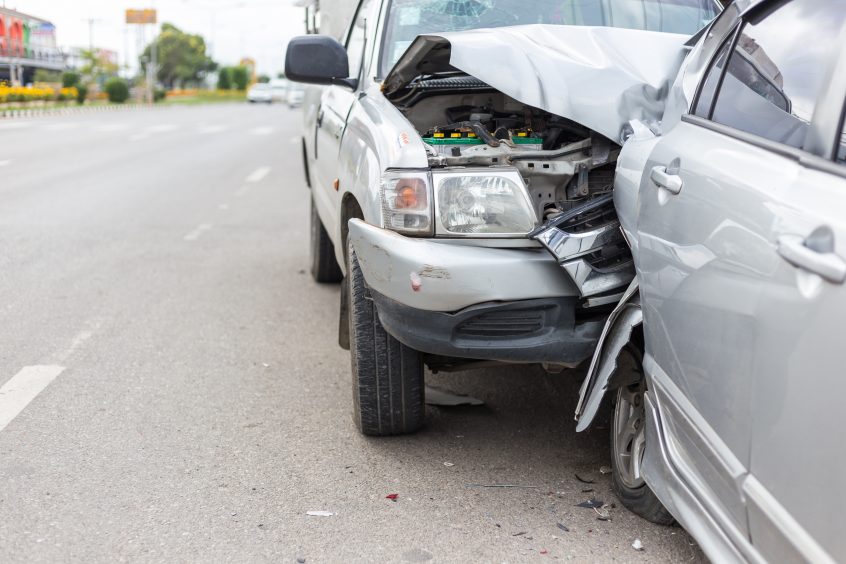Africa shockingly records highest number of accidents despite having the least vehicles
Sekete Lesaoana
MASERU, Lesotho — While Africa accounts for only 3% of the world’s registered vehicles, it shockingly accounts for a staggering 20% of deaths from road traffic accidents globally.
Nearly 272 000 Africans die on the roads each year, with pedestrians comprising 40% of these casualties, Roads Directorate director Kinini Mathews said this week.
1.35 million killed in accidents annually
Mathews highlighted that globally, road traffic accidents claimed over 1 million lives annually. These incidents were now the leading cause of death for children and young people aged five to 29.
Mathews shared these insights during the Road Accident December Campaign Evaluation, a multisectoral engagement involving different stakeholders.
The evaluation report pinpointed Maseru urban as the district with the highest road fatalities. It also noted a significant number of adult pedestrian deaths in the past year.
Speed a leading cause of accidents
“Speed is a leading risk factor for road traffic deaths and injuries,” Kinini stated.
“Reducing speed limits in urban areas has been proven to decrease fatality risks, particularly safeguarding vulnerable groups like pedestrians, cyclists, children, the elderly, and people with disabilities. A mere increase in average speed of one kilometre per hour corresponds to a 3% higher risk of a crash, and a 4% to 5% increase in fatalities.”
She added that most African countries had a default urban speed limit of 50 kilometres per hour, but this was often insufficient for areas with heavy pedestrian and cyclist traffic.
Despite the Department of Road Safety’s campaign to mitigate accidents, injuries, and fatalities due to speeding, drunk driving, and non-compliance with seatbelt laws, several challenges had hindered its success.
Shortage and lack of spot devices, promotional material hindering progress accidents reduction
The campaign report cited issues such as a shortage and malfunctioning of spot fine devices, lack of airtime, insufficient promotional materials, and understaffed teams. These factors had led to unattended cases, and the current spot fine charges were considered too low to deter drivers effectively.
More from Africa News 24
Kinini advocated for a 30 kilometre per hour speed limit near schools to protect children in high pedestrian activity areas.

“Numerous challenges persist, including the absence of a comprehensive road safety policy, the need for stronger multi-sector collaboration, securing political commitment, and enhancing public awareness of traffic laws,” she noted. The recent campaign, which ended on 5 January 2024, aimed to reduce drunk driving and speeding.
“Today’s meeting is to assess the campaign’s impact,” Kinini said.
- Approximately 1.19 million people die each year as a result of road traffic accidents.
- Road traffic injuries are the leading cause of death for children and young adults aged 5–29 years.
- 92%t of the world’s fatalities on the roads occur in low- and middle-income countries, even though these countries have around 60% of the world’s vehicles.
- More than half of all road traffic deaths are among vulnerable road users, including pedestrians, cyclists and motorcyclists.
- Road traffic accidents cost most countries 3% of their gross domestic product.
- The United Nations General Assembly has set an ambitious target of halving the global number of deaths and injuries from road traffic accidents by 2030 (A/RES/74/299).
According to the World Health Organisation, the following are the risk factors for accidents
The safe system approach: accommodating human error
Transport systems should be responsive to the needs of users and forgiving of human error. The safe system approach to road safety aims to ensure a safe transport system for all road users. This approach takes into account people’s vulnerability to serious injuries and recognizes that the system should be designed to accommodate human error. The cornerstones of this approach are safe roads and roadsides, safe speeds, safe vehicles, and safe road users, all of which must be addressed in order to eliminate fatal accidents and reduce serious injuries.
Speeding

- An increase in average speed is directly related both to the likelihood of a crash occurring and to the severity of the consequences of the crash. For example, every 1% increase in mean speed produces a 4% increase in the fatal crash risk and a 3% increase in the serious crash risk.
- The risk of death for pedestrians hit by car fronts rises rapidly (4.5 times from 50 km/h to 65 km/h).
- In car-to-car side impacts the fatality risk for car occupants is 85% at 65 km/h.
Driving under the influence of alcohol and other psychoactive substances
- Driving under the influence of alcohol and any psychoactive substance or drug increases the risk of a crash that results in death or serious injuries.
- In the case of drink-driving, the risk of a road traffic crash starts at low levels of blood alcohol concentration (BAC) and increases significantly when the driver’s BAC is ≥ 0.04 g/dl.
- In the case of drug-driving, the risk of incurring a road traffic crash is increased to differing degrees depending on the psychoactive drug used. For example, the risk of a fatal crash occurring among those who have used amphetamines is about five times the risk of someone who hasn’t.
Non-use of motorcycle helmets, seat-belts and child restraints
- Correct helmet use can reduce the risk of death in a crash by more than 6 times and the risk of brain injury by up to 74%.
- Wearing a seat-belt can reduce the risk of death among vehicle occupants by up to 50%.
- The use of child restraints can lead to a 71% reduction in deaths among infants.
Distracted driving
There are many types of distractions that can lead to impaired driving. The distraction caused by mobile phones is a growing concern for road safety.
- Drivers using mobile phones are approximately 4 times more likely to be involved in a crash than drivers not using a mobile phone. Using a phone while driving slows reaction times (notably braking reaction time, but also reaction to traffic signals), and makes it difficult to keep in the correct lane, and to keep the correct following distances.
- Hands-free phones are not much safer than hand-held phone sets. Texting considerably increases the risk of accidents.
Unsafe road infrastructure
The design of roads can have a considerable impact on their safety. Ideally, roads should be designed keeping in mind the safety of all road users. This would mean making sure that there are adequate facilities for pedestrians, cyclists and motorcyclists. Measures such as footpaths, cycling lanes, safe crossing points and other traffic calming measures can be critical to reducing the risk of injury among these road users.
Unsafe vehicles
Safe vehicles play a critical role in averting accidents and reducing the likelihood of serious injury. There are a number of UN regulations on vehicle safety that, if applied to countries’ manufacturing and production standards, would potentially save many lives. These include requiring vehicle manufacturers to meet front and side impact regulations, to include electronic stability control (to prevent over-steering) and to ensure airbags and seat-belts are fitted in all vehicles. Without these basic standards the risk of traffic injuries – both to those in the vehicle and those out of it – is considerably increased.
Inadequate post-crash care
Delays in detecting and providing care for those involved in road traffic accidents increases the severity of injuries. Care of injuries after a crash has occurred is extremely time-sensitive: delays of minutes can make the difference between life and death. Improving post-crash care requires ensuring access to timely prehospital care, and improving the quality of both prehospital and hospital care, such as through specialist training programmes.
Inadequate law enforcement of traffic laws
If traffic laws on drink-driving, seat-belt wearing, speed limits, helmets and child restraints are not enforced, they cannot bring about the expected reduction in road traffic fatalities and injuries related to specific behaviours. Thus, if traffic laws are not enforced or are perceived as not being enforced, it is likely they will not be complied with and therefore will have very little chance of influencing behaviour.
Effective enforcement includes establishing, regularly updating, and enforcing laws at the national, municipal, and local levels that address the above mentioned risk factors. It includes also the definition of appropriate penalties.
Prevention
Road traffic injuries can be prevented. Governments must take action to address road safety in a holistic manner. This requires involvement from multiple sectors such as transport, police, health and education, as well as the private sector and civil society organizations. It requires actions that address the safety of roads, vehicles and all road users.
Effective interventions include designing safer infrastructure and incorporating road safety features into land-use and transport planning, improving the safety features of vehicles; enhancing post-crash care for victims of road traffic accidents; setting and enforcing laws relating to key risks, and raising public awareness.
WHO response
WHO works with Member States and partners across sectors to support road safety evaluation, implementation and planning. As the lead agency for road safety in the United Nations, WHO plays a key role in guiding global efforts by advocating for road safety at the highest levels, compiling and sharing good practices and raising awareness of road safety.
WHO serves as the secretariat for the United Nations Decade of Action for Road Safety 2021–2030, which aims to reduce road traffic deaths and injuries by at least 50% by 2030. This includes convening a global network of heads of national road safety agencies, producing global status reports to track progress, and providing technical assistance.
WHO works with a range of partners to provide technical support to countries. For example, WHO works with the Bloomberg Initiative for Global Road Safety (BIGRS) to reduce fatalities and injuries from road traffic accidents in a range of low- and middle-income countries.
WHO chairs the UN Road Safety Collaboration mechanism and organizes and hosts, with key partners, high profile advocacy events such as UN road safety












